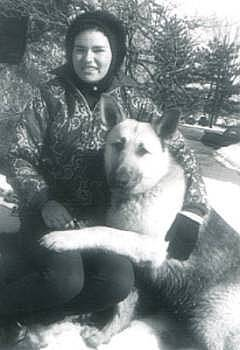QuestionHi Cindi,
My Scottie started limping several months ago so we took her to our Vet. They couldn't find anything wrong and gave us a anti inflamitory steroid to give to her. It did help a little but she is still limping some, esp. when she stands after lying on the bad hip. I've been told that this is common in this breed of dog. Is there anything that will help her move more easily? My friend gives her arthritic cat, alpha lipoic acid which helps it. Could that help my dog? My dog is 6 years old.
Thank you for your time.
Cheri
AnswerHi Cheri,
Scottish Terriers are prone to get two conditions with the symptoms you've described:
The first is an inherited neurological disorder, commonly referred to as "Scotty Cramp". It is not painful for the dog, but afflicted animals should not be bred. This disorder is characterized by occasional episodes of increased muscular cramping in which the dog has difficulty walking or standing. Scottish Terriers with cramp have no unusual health problems and live a normal life span. Given this, cramp is not as bad of an ailment as some other genetic disorders. Although Scottie Cramp is a permanent condition, it does not worsen with age. The vast majority of dogs affected with Scottie Cramp make perfectly wonderful companions, able to share virtually all activities with their families. Most do not need medication. However, owners may wish to limit exercise to below the threshold level for an incident of cramp.
While the disorder may arise as early as 6-8 weeks of age, it usually is not noticeable until an older age. In mild cases, the dog learns to compensate for this cramping, making it extremely difficult for even experienced breeders or veterinarians to spot the disorder.
Should your dog have cramp, you can minimize incidents by keeping the dog in a calm environment. Dogs with mild cramp need no other treatment. If severe cramping occurs, medication is available to diminish the effects. Additionally, Vitamin E supplements have known to be helpful, because of it's anti-inflammatory benefits. Ask your vet what the correct dose would be for your dog. A possible new treatment involves the use of serontonin-blockers (Prozac or Zoloft).
Scotties like other dwarf-legged breeds can develop Canine Hip Dysplasia. The hip joint of the dog is typically reported as normal at birth. After birth, something (genetic or environmental) initiates a bad fit between the socket (acetabulum) and the ball (head of the femur).
Current thinking is that hip dysplasia is an inherited polygenetic (multiple genes) disorder. While it is possible to pick up the signs earlier, Dysplasia is usually observable between 15 and 35 months of age. In dysplastic dogs, the hip joint is weakened and is more subject to injury by normal activity such as jumping off a couch and rough housing with a playmate. The dog will often appear lame or have a hitch in its movement.
Your next step should be diagnostic testing to rule out hip dysplasia, which is the more serious of these two conditions. Medical treatment of hip dysplasia has greatly improved in the last several years thanks to the introduction and approval of several new supplements and drugs. Because hip dysplasia is primarily an inherited condition, there are no products on the market that prevent its development. Through proper diet, exercise, supplements, anti-inflammatories, and pain relief, you may be able to decrease the progression of degenerative joint disease, but the looseness in the joint or bony changes will not change significantly.
I hope I've been a help.
Best of luck,
Patti

 What dog is right for me?
QuestionHi,
my name is Miriam and I am 12 years old.
What dog is right for me?
QuestionHi,
my name is Miriam and I am 12 years old.
 2 puppies one lab the other lab/shepherd mix
Question
Bailey ( female lab) a
I have a 3 1/2 month ol
2 puppies one lab the other lab/shepherd mix
Question
Bailey ( female lab) a
I have a 3 1/2 month ol
 10 week old Pitbull Pup
Question
Ares
I have a few questions =]
Why does he ke
10 week old Pitbull Pup
Question
Ares
I have a few questions =]
Why does he ke
 Gnawing/ Uncontrollable Itch
Question
Burgess
My wonderful dog Burgess, A Dac
Gnawing/ Uncontrollable Itch
Question
Burgess
My wonderful dog Burgess, A Dac
 My miniature pinscher :)
Question
Chanel
I had a miniature pinscher of 8
My miniature pinscher :)
Question
Chanel
I had a miniature pinscher of 8